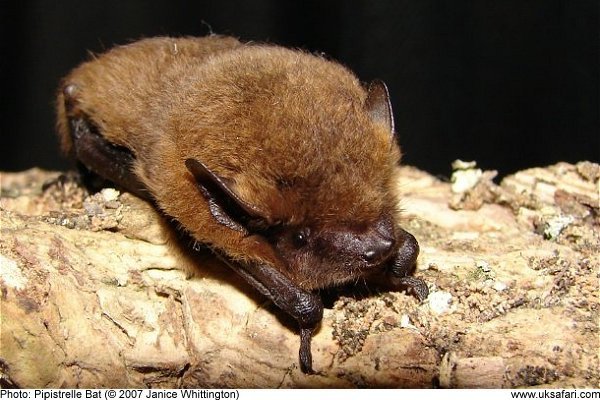 Bats
Bats
News > Bats >

On mild days in March you may be lucky enough to see a bat flying in the daytime. Recently I watched a Lesser Horseshoe bat for half an hour as it flew just above my head in brilliant sunshine at Chedworth in Gloucestershire.
After a few months in hibernation without any food they obviously get a tad peckish, and judging by the way this one was stuffing itself on gnats and midges it was starving. Hardly surprising when you think it had probably been hanging around in hibernation for a few months without any food at all.
Bats are possibly the most misunderstood and under-rated mammals in the UK. Despite popular opinion, our native bats do not drink blood. It's an easy mistake to make, but of course the real blood-suckers are mosquitoes, leeches and the Inland Revenue.
There are at least 17 species of bat known to be breeding in the UK, and they all feed on insects which they catch on the wing. This kind of hunting requires pin-point accuracy, and so the chances of them getting tangled in your hair - another widely held and mistaken belief - is virtually nil.
It's true that they will fly very close to your head, but it's not you they're aiming for. Even in total darkness they can detect a strand of silk in a spiders web and manage to fly around it. In fact when they fly close to your head there's probably an insect just above you. The heat from your body rises up and the warm air above your head attracts all kinds of flying insects. Bats fly in your direction in order to catch them.
More info at: UK Safari Bat Section

 Popular Pages
Popular Pages
Amphibians, Bats, Badgers, Beetles, Birds, Birds of Prey, Bumble Bees, Butterflies, Caterpillars, Creepy-Crawlies, Deadly Spiders, Dolphins, Dragonflies, E-Postcards, False Widow Spiders, Free Newsletter, Frogs, Fungi, Garden Spiders, Glow-Worms, Grey Squirrels, Hedgehogs, House Spiders, Ladybirds, Mammals, Marine Mammals, Moths, Owls, Reptiles, Spiders, Toads, Trees, Wildlife Hospitals
© Copyright 2017 G. Bradley - UK Safari | About Us | Links | Contributors



 Related Pages
Related Pages
